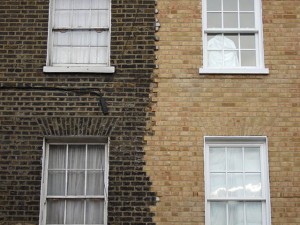Gentrfication
Posted on November 22, 2013 | posted by:
As soon as I started this semester, I was introduced a new English word that I have never heard before: Gentrification. I guess I had been taking it in the positive way and seeing it necessary for a city to evolve for the better. However, as we went deeper into the issue, it became clear to me that this evolution is not always a positive one. In our projects in the Lower East Side, we interviewed many people from different backgrounds and realized that it can be devastating for the residents. At one side, when more money flows, the neighborhoods tend to become cleaner, tidier and safer. At the other side, this flow also tends to cause the diminishing cultural heritage and diversity due to unaffordable new prices and rents.
How can the cities, residents and governments deal with this then? In my opinion, the first step is to get the sense of the problem and try to explain why this is happening. Why there is a constant flow of people and capital towards the cities? I believe, this problem is not only about the money and residents ability to cope with this change. I think these are symptoms of a larger systemic issue that is embedded in economy, media and policy. Moreover, the issue is connected to different scales in terms of time. Let me try to explain;
My first observation is that this is of the unintended consequence of post-war suburbanization. The policy of building millions of large houses, creating small towns, where everyone can live in a good standard may have seemed like a good idea for U.S. after the war. But one of my hunches is that this started to back-fire in the last ten to twenty years. People started not getting the life satisfaction from slow and safe suburban life. Particularly younger professionals are striving for more interaction and self expression than ever before. The suburbs are no longer the cool places to be, people need more action. This tremendous demand for city is coming from somewhere, and I believe it is a chain-reaction that starts from suburbs.
This brings me to my second point which is media. In the last twenty years of my life, even as a non-citizen of U.S., I have experienced a huge shift in terms of what the media promotes as a culture. During middle school and high school, I grew up with TV series such as ‘Dallas’, in which the beautiful way of living was to have a huge ranch, horses and live the suburban life to the fullest. As I pass from high-school to college, we started watching series such as ‘How I met your mother’, ‘Sex and the city’, all of which really impacted our expectations from a city life. Suddenly, the city was the place to live. And if I felt that in Turkey, I am sure it was felt even more here in the U.S. It is important to note that the invention of social media has been amplifying these effects by creating a craving for more interactions.
The third point is how businesses impact this trend. When I graduated from college and started working for P&G, the location of the office was one of my last concerns. It was actually P&G’s one of the last concerns as well and so they had an office far away from the center of the city. I recently went to visit my college, had chats with a couple of students and I was surprised to see that the location of the company became a prominent criteria in their career path. They were no longer satisfied with a good company and bad location. They had a clear preference for the companies that are in the city center and close to the social life. Having seen this trend, I think many companies are coming back to the cities in order to attract the right talent. As the demand increases, consequently, the prices increase.
How can the residents, local business cope with this powerful flow? The answer is not easy. My sense is that the impact that can be done by enabling current residents and businesses might be limited due to the size of the economic demand. Moreover, looking at the rate of price increases, I do not expect a slowdown for gentrification. In my opinion, a bigger impact might be created by making the already existing suburbs economically and culturally attractive. If people find more opportunities for self expression and connections, the economy would follow as well as the media. If that happens, one of the biggest sources of the flow into the city will slow down, naturally bringing the system to an equilibrium.
